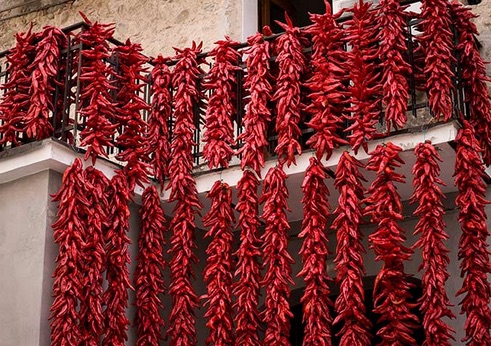- Read offline
- Access all content
- Build a list of your own favourites
- Search the contents with full-text search functionality
- ... and more!
peperone
peppers (capsicums)
Peppers of any kind, bell or corni (horn-shaped). Italians especially like them roasted and put up sott' olio or sott' aceto as an antipasti. Peperoni ripieni, or imbottiti, or al forno will be stuffed; gratinati are stuffed too, then rolled in breadcrumbs and baked.
Hot peppers or chilies are peperoncini.
Four peppers are in the Slow Food Presidium:
peperone corno di bue di Carmagnola: long yellow and red sweet peppers from Carmagnola in Piedmont; popular grilled, fried in olive oil or with a bagna cauda.
peperone di Capriglio: another Piedmontese pepper, small round and red or yellow, produced in the hills of Capriglio d’Asti.

peperone crusco from Basilicata
peperone quadrato della Motta: fragrant red or yellow squarish pepper grown in Motto, near Costigliole d'Asti. Also good in a bagna cauda.
Americans accustomed to ordering a pepperoni pizza may get a pile of peppers instead of their beloved spicy little salame—this was invented by Italian-Americans in the early 20th century, and still hasn't made it back over the Atlantic. Perhaps the nearest equivalent is salsiccia Napoletana piccante.
Images by casa ecologica, Sapori di sassi

